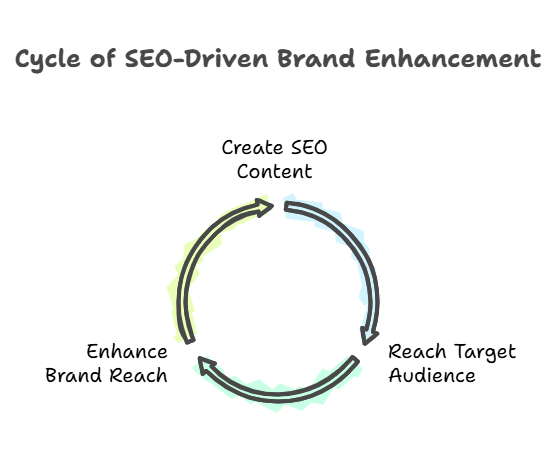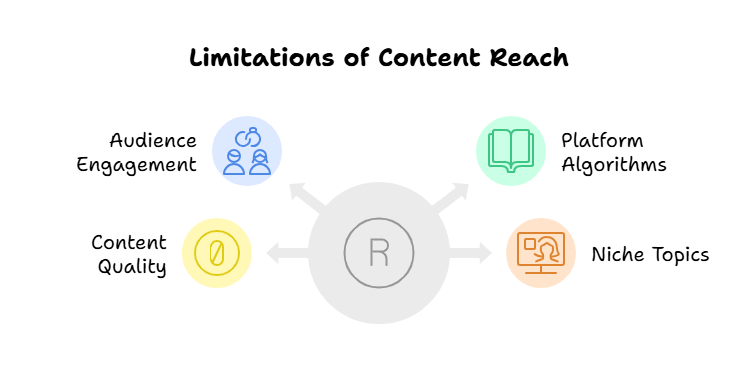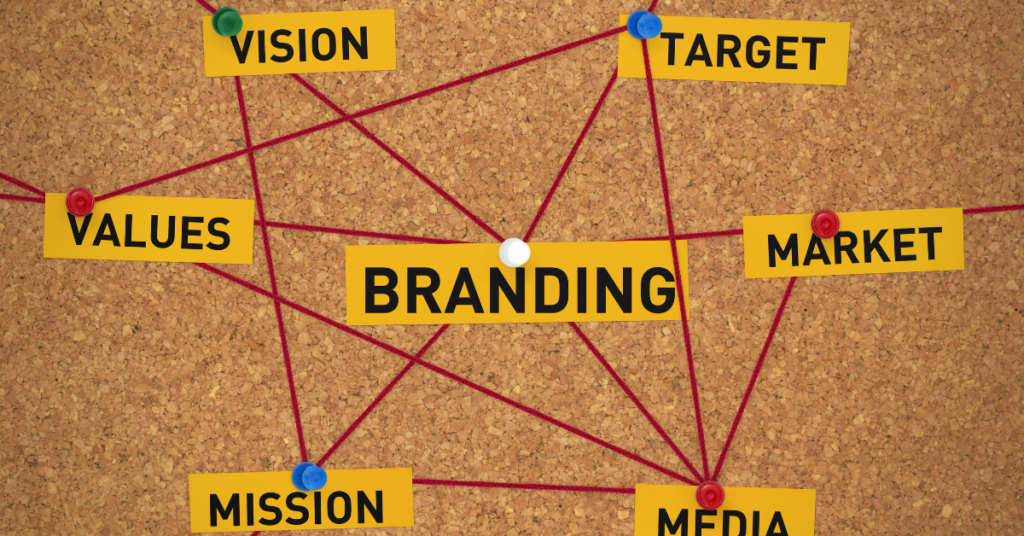Businesses pay great attention to digital marketing for their brands, but they do not achieve the desired results. Their advertising methods also stress their revenue, and their policies for targeting audiences are not very effective.
Earned media is the best tool for advertising. Earned media strategy is highly different from other types of media. In this article, we discuss every aspect of earned media and explore its benefits and hidden features.
What is Earned Media?
Earned media refers to the advertising of brands through promotional content. They do not depend upon paid ads. Earned media generates more credibility and trust. Because no one directly controls earned media.
Social media and customer reviews play important roles in earned media. Earned media generates a large number of trustworthy clients. Ads are displayed on various social media platforms. Earned Media creates content that is easily ranked on various search engines.
Benefits of Earned Media
Earned media plays an important role in digital marketing. They highlight brand features by using social media platforms and customer feedback. Here, we discuss the benefits.
1. Credibility and Trust
They build a unique credibility by mentioning customer reviews in their ads. By displaying ads in which users give positive reviews, they create a strong relationship with clients. Building trust is essential to increasing the credibility of the brand. They promote content that compares the brand with its competitors.
2. Increased Reach and Brand Awareness
When earned media content is easily ranked on multiple search engines. Their brand reputation has increased. A unique reputation is a great tool forexplantingg businesses all over the world. They review customers’ feedback and try their best to remove all the flaws.
3. Customer Loyalty
This media type attracts a large number of leads because its advertising depends on a third party. Brands and companies do not directly participate in this type of marketing, which is different from others. It converts its consumers into loyal customers by earning their trust.
4. Cost Savings
Earned media is highly important for digital marketing. Its strategy is based on customers’ positive reviews. Earned and paid media are different. Earned media is a budget-friendly method for promoting brands, while paid Media disturbs brands because it requires a large amount of money for brand advertisement.

Why Does Earned Media Matter?
- Earned media is considered to be a more trusted source for digital marketing because its response comes from third parties such as media outlets and influencers.
- People easily trust earned media because their strategy is based on customer and social media channels.
- Because they make use of social media channels, they may be rapidly shared with a large audience.
- When customers purchase products, they give positive feedback, which can have a long-lasting impact on users.
- Their content is easily ranked on search engines, enhancing SEO and generating large organic traffic.
- SEO generates backlinks for websites, which improves their domain authority.
- Paid advertising creates difficulties for brands, but their cost-effective strategy makes them more innovative and diverse.
Advantages of Earned Media
1. SEO Advantages
Websites provide links to high-quality earned media content. These backlinks improve the content’s ranking on multiple search engines and generate organic traffic. User traffic has a significant impact on brand ROI.
2 . Sustained Visibility
Their blog postings and display ads can enhance their visibility as more users purchase usebrandsnd. Their unique reputation strengthens their position compared to their competitors.
3. Better Engagement
They build long-term relationships with clients by appreciating their reviews. They try their best to remove all the errors in their strategy.
4 . Wide Reach
Their SEO content and ads easily reached their target audience. Their wider reach enhances their product and services.

Disadvantages of Earned Media
1. Lack of Control Brands
Brands and companies do not have direct control over each other. Negative and misleading coverage damages brand reputation.
2. Inconsistent
The frequency and quality of earned media might change. You might get great exposure once and then nothing for a while.
3. Time-Consuming
A company’s approach to enhancing its brand reputation may require a long time. This directly impacts brand revenue and lowers its name in the market.
4. Limited Reach in Some Cases
Sometimes times, their content can not reach to wide range of audiences due to some limitations in their content.

Types of Earned Media
1. Press Media
Press media covers all newspapers, TV, radio and online platforms. This type of media contains all the content obtained from public relations. When journalists or media outlets mention your brand in their articles and news, they are considered earned media. In paid media, you have control over your content and advertisements, while this feature is not available in earned media. The data generated from earned media is more credible because it is received from customer reviews and social media.
2. Social Media
Social media is used by millions of people from all overthe world. When the customers purchase products from brands, they give feedback. Their positive reviews can enhance their credibility. Negative reviews are also taken in counted by brands. They try their best to remove all their product flaws. Brands gained grea popularity by using social media. This type of media posts their blog on websites. Their website hits their target audience.
3. Reviews and Recommendations
In earned media, customer testimonials and recommendations are highly significant. Positive reviews from customers are used as authentic social proof, which others use to purchase products. When users recommend others buy your products and services, they boost brand credibility. Although negative reviews can also occur, they provide you a chance to address problems and show customers that you respect their opinions.
4. User-generated Content
User-generated content includes photos, videos, blog posts and testimonials created by customers who appreciate brands. This form of content is genuine and authentic because a third party generates it. User-generated content can easily spread and generate more organic traffic for your brand exposure.
Challenges in Managing Earned Media
This type of media is most effective. Their strategy is budget-friendly. But it has some challenges.
1. Lack of Control
In earned media, the brand does not control it. All the results are based on third-party responses. Their responses may increase brand credibility. However, sometimes, misreporting has a negative impact on brand reputation.
2. Measurement Difficulties
Brands can not measure their success in earned media, and their facts and figures vary according to the latest trends. Sometimes, these results lead to misunderstandings of brand ROI.

Evaluating the Impact of Earned Media
1. Output
Output refers to the quantitative results that brands gain through earned media. These results help brands identify their media mentions and social interactions. Output can include
- Media mentions: They measure how many times brand names are mentioned in media mentions such as blogs, articles and news.Social Engagement. They show the amount of time of audience sharing and likes of material.
Content Reach: How far your content is spread all over the world.
2. Outcomes
Outcomes measure qualitative results that tell earned media’s impact on customers’ perspectives and behaviors. Outcomes can include
- Audience Engagement: Outcomes are measured by analyzing how much the audience is engaged with your brand.
- Change in Perceptions: Outcomes measure how earned media change the minds of their customers.
3. Business Results
Business results measure the impact of earned media on your brand. Outcomes and Output measure visibility and perspectives, and business results show the economic success of the business.
- Lead Generation: They measure can this media can generate large leads for products and services.
- Website Traffic: They refer to this type of media that boosts website traffic and they can enhance their organic traffic.
Why You Shouldn’t Pay for Earned Media?
1. Authenticity is Lost
Paying for earned media can challenge your authority. They rely on organic mentions and third-party sources, but paying for it can be seen as inauthentic and biased.
2. Trust is Damaged
Customers will stop believing in your brand once they discover that you purchase earned media. Earned media significantly impact brand ROI.
3. Compromise of Media Objectivity
Paid journalists and influencers may not be as objective when covering your brand, which could lead to biased or less genuine coverage.
4. Lost Value in Word-of-Mouth
Earned media content directly comes from the audience. Paying for it can affect on word of mouth process.
5. Potential Negative Backlash
When customers know you pay for this type of media, they can criticize your brand on various social media platforms.
6. Less Control Over Message
Paid media allows you to deliver content according to your preferences. However, paying for earned media can negatively impact customers.

Importance of Earned Media in Digital Marketing
In digital marketing, earned media is a vital tool because it enhances credibility and SEO ranking. They are essential tools for building brand credibility and visibility inthe digital world.
- In digital marketing, they play an important role in building trust. Users make comprehensive studies of your brand on social media. Then, they check its validations, which are more credible than paid ads.
- They are cost-effective marketing strategies. Product advertisement through earned media is valuable as it saves brands from too much expense.
- Positive reviews and backlinks make websites more credible and improve their social media ranking.
- When customers share positive reviews with others. They build a strong lead of loyal customers.
Leveraging Earned Media in Marketing
Step 1: Set goals
Before using earned media, it is essential to set a goal. Ensure that you want to gain a measurable result from it. The specific goal in your strategy affects your earned media process.
Step 2: Build your Earned media strategy.y
Makes an effective social media strategy that aligns with your goals. This includes identifying your target audience and deciding which social media platforms you want to use. Also,o makes an in-depth study of your content. Builds working relations with journalists, influences and customers.
Step3: Tell story
Create a catchy story that media outlets, influences and customers can easily detect. This involves highlighting your brand features, interests and goals. Whether through blog posts, press releases, or social media content, your story should evoke emotion, resonate with your audience, and highlight what makes your brand unique.
Step 4: Promote and engage
Promote your content on multiple social media platforms to encourage engagement. By building strong interactions with journalists and customers, you can increase your organic media traffic.
Step 5: Be patient
Earned media does not give immediate results. Building long-term relations and measurable results can take time. It’s important to stay consistent in creating valuable content, engaging with your audience, and nurturing relationships with media professionals and influencers.
Conclusion
Earned media is an invaluable tool for businesses, offering a more authentic, cost-effective, and impactful way to build brand credibility and reach a wider audience. Unlike paid media, earned media relies on customer feedback, social media engagement, and organic mentions, which generate trust and long-lasting brand loyalty.
While earned media has its challenges—such as lack of control and measurement difficulties—the benefits far outweigh these drawbacks, by setting clear goals, crafting engaging stories, promoting content strategically, and being patient, brands can effectively leverage earned media to enhance their digital marketing efforts.
In addition to improving SEO and organic traffic, this approach builds honest relationships with customers and media organizations. In an extremely competitive sector, earned media can boost a brand’s reputation and promote long-term growth with the perfect approach.
FAQs
What differentiates paid media from earned media?
Earned media is not directly paid for, whereas paid media involves paying for ads or promotions. Credibility is increased by third-party validation in earned media.
What are earned media’s disadvantages?
Lack of control, variable results, challenges measuring impact, and the potential of negative or misleading coverage that may harm the brand’s reputation are some of the disadvantages of earned media.
What is the risk of paying for earned media?
In addition to undermining the organic nature that makes earned media important, paying for it can make it appear fake, which could cause a decrease in customer trust and credibility.
What role do testimonials from customers play in earned media?
In addition to improving SEO by creating useful backlinks and raising online visibility, favorable feedback can offer social evidence, fostering trust and encouraging customers to think about the business.
Can negative feedback impact earned media?
Although negative feedback or reviews could negatively impact a brand’s reputation, they also present chances to resolve problems and show the company respects consumer input.
